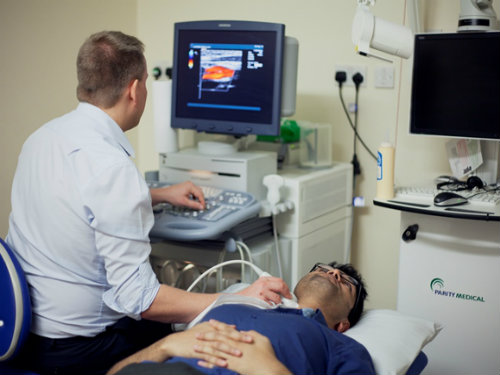
By Cate Burke, head of stroke training at the Stroke Association
The Stroke Association’s Action on Stroke Month kicks off in May, and this year aims to raise awareness of TIA (transient ischaemic attack, or mini-stroke). Health and social care professionals everywhere are more familiar with the urgent need for specialist treatment for patients with stroke symptoms. However, our work with care staff suggests that TIA is not always viewed as a medical emergency. Its warning signs are frequently undiagnosed, or mistaken for ‘just a funny turn’ by both patients and professionals, leaving people at risk of stroke.
In our training sessions, we regularly meet care workers who are unable to identify a TIA and do not know how to treat the condition. This is supported by the Stroke Association’s latest report investigating TIA patients’ experiences, Not just a funny turn, which shows that about a quarter of people agreed that healthcare professionals are too quick to dismiss TIA.
Every year, about 46,000 people in the UK have a TIA for the first time, and given how often the condition is undiagnosed, the Stroke Association estimates that the figure could be much higher.
It is vital that people experiencing a TIA receive urgent assessment and treatment: the greatest risk of having a stroke is within the first few days after a TIA. Care staff have a crucial role to play in identifying TIA symptoms and initiating an emergency response.
Someone having a TIA may experience one or more of the FAST stroke symptoms (facial droop, arm weakness, speech problems). Less common symptoms can include confusion, visual problems, vertigo or loss of co-ordination. Typically, TIA has a sudden onset but, unlike stroke, the symptoms are fleeting and last no longer than 24 hours. At the onset of symptoms, care staff should respond by calling 999 immediately. Residents who may have had a TIA in the past, and who have not sought urgent medical treatment, should see their GP as soon as possible, as they are at high risk of having a stroke.
There are a number of risk factors care professionals should be aware of, such as older age, hypertension and diabetes mellitus – but as with a stroke, a TIA can happen to anyone at any time.
Due to the brief warning signs of a TIA, it isn’t always easy to spot if someone has had the condition. Symptoms may have been resolved by the time a healthcare professional sees the patient. Many care professionals we work with report that in some cases, GPs and emergency services display a lack interest once signs of a TIA have subsided. A thorough understanding of TIA can empower care workers with the confidence to challenge professionals and ensure that people have the best possible chance of a recovery.
TIA can be someone’s first brush with mortality and can leave people feeling shaken and vulnerable. Anxiety, depression and worry about future TIAs and stroke are all common. Psychological support, and working with residents to address their risk factors, may help to alleviate such problems.
Change relies on many different people. We hope that throughout Action on Stroke Month and in the months to come, as many care workers as possible can join us in helping to prevent people from experiencing the devastating impact of stroke. For details about Action on Stroke Month, visit our website.


 ‘Dear Sajid Javid: please end the inappropriate detention of autistic people and those with learning disabilities’
‘Dear Sajid Javid: please end the inappropriate detention of autistic people and those with learning disabilities’ Ofsted calls for power to scrutinise children’s home groups
Ofsted calls for power to scrutinise children’s home groups Seven in eight commissioners paying below ‘minimum rate for home care’
Seven in eight commissioners paying below ‘minimum rate for home care’ Children and young people with SEND are ‘valued and prioritised’ in Wiltshire, find inspectors
Children and young people with SEND are ‘valued and prioritised’ in Wiltshire, find inspectors 
 Facebook
Facebook X
X LinkedIn
LinkedIn Instagram
Instagram
Comments are closed.